This wonderful Cornish workshop and museum is dedicated to the legacy of studio pottery trailblazer Bernard Leach
Five of the most haunting paintings
Five of the most haunting paintings
30 Oct 2019
With Halloween upon us, we highlight some of the art world’s scariest and most shocking paintings.
Takiyasha the Witch and the Skeleton Spectre, Utagawa Kuniyoshi
Bridgeman Images
The 19th-century artist Utagawa Kuniyoshi frequently took inspiration from Japanese history and mythology, as shown in this woodblock print. To the left-hand side, Princess Takiyasha summons a gigantic skeleton to frighten the warrior Mitsunki. The emperor had sent the warrior to quash the rebellion led by Takiyasha’s father, Massakado. Despite conjuring up this fearsome apparition, Takiyasha’s attempts to prevent Mitsunki defeating the plotters were in vain.
The Widow II, Käthe Kollwitz
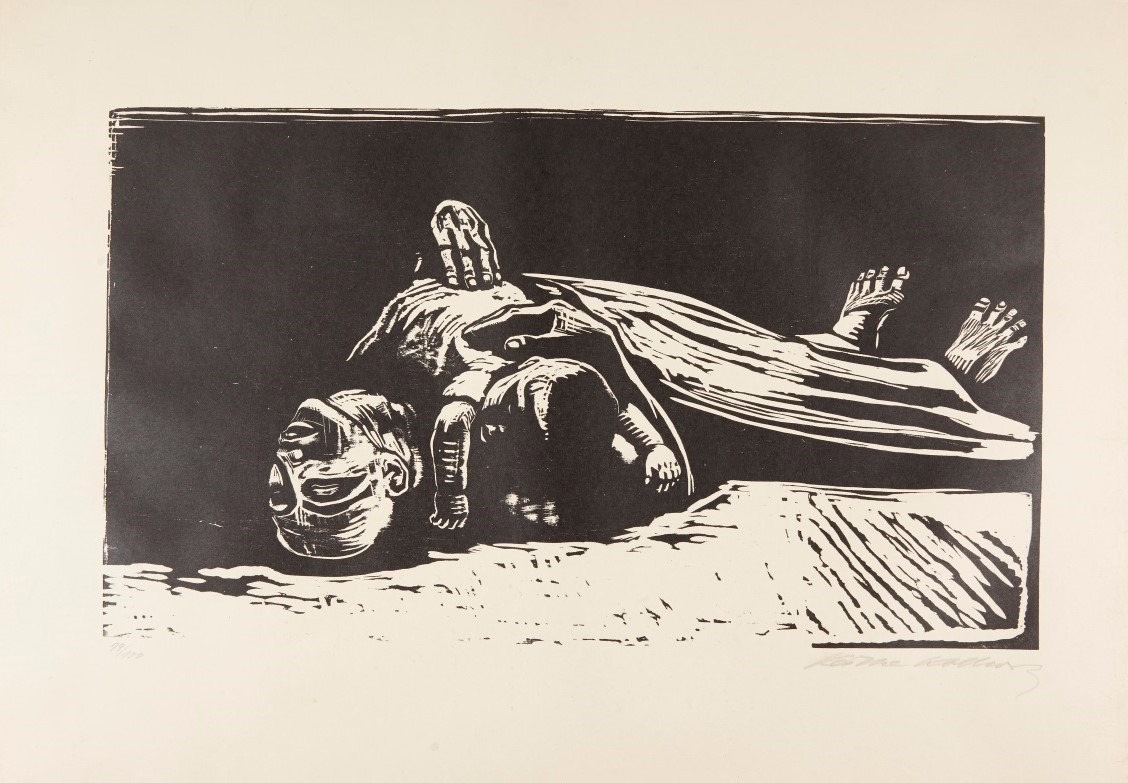 Käthe Kollwitz, Krieg The Widow II, 1922 © The Trustees of the British Museum. Reproduced by permission of private collection
Käthe Kollwitz, Krieg The Widow II, 1922 © The Trustees of the British Museum. Reproduced by permission of private collection
This harrowing black and white woodcut was made by German artist Käthe Kollwitz, one of the leading artists of the early 20th century. It forms part of her series Krieg (War), which was created in response to the horrors of the World War I. In this 1922 work, a woman and her baby cradle each other in death – a reworking of the Pietà motif. This image was pertinent for Kollwitz, who lost her son, Peter, in battle in 1914.
Look out for this work in Portrait of the Artist: Käthe Kollwitz; The British Museum.
Until 12 January 2020
The Ghost of a Flea, William Blake
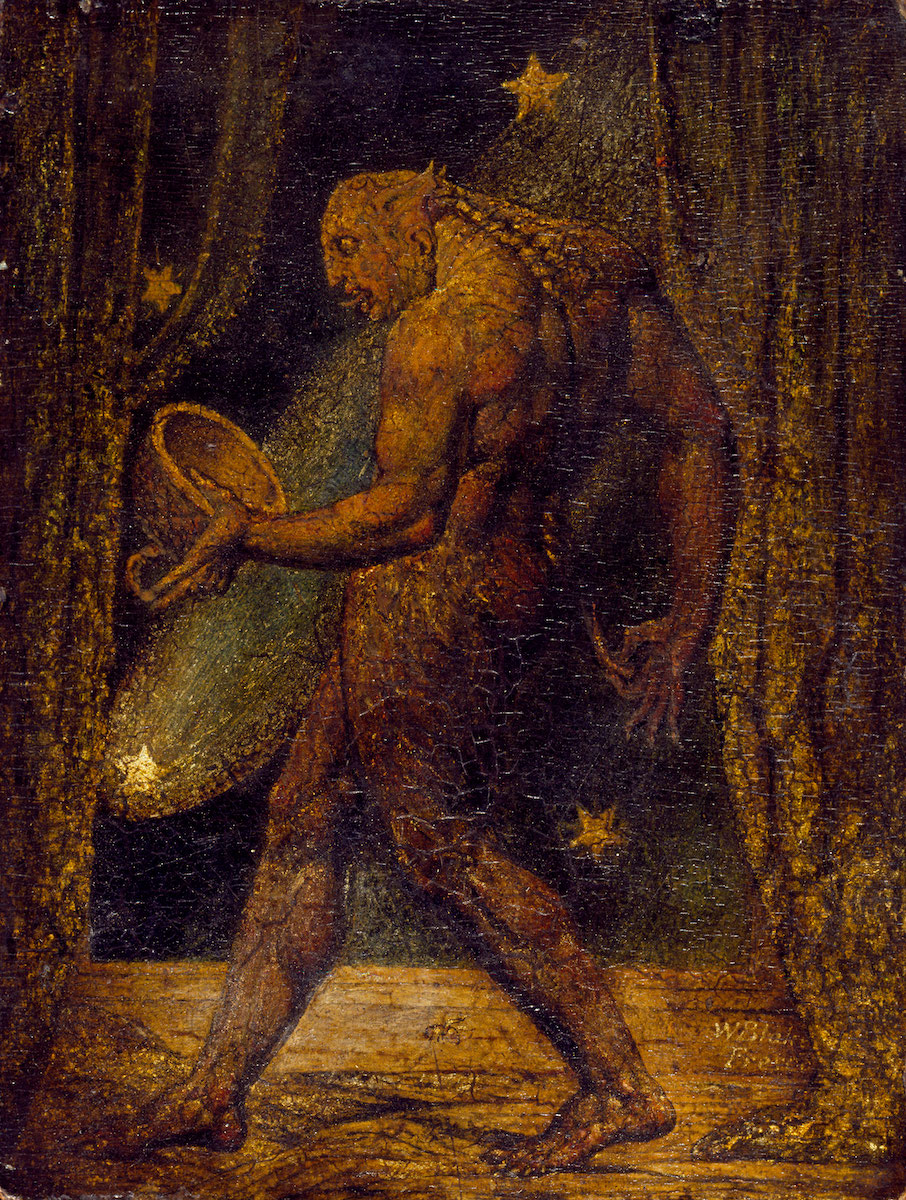 The Ghost of a Flea, c.1819. Private Collection
The Ghost of a Flea, c.1819. Private Collection
A colossal man-beast scrutinises a bowl of blood in Blake’s miniature painting. According to his close friend, John Varley, Blake was inspired to create this work after experiencing a vision of a ghost of a flea. While drawing the spirit, the creature told Blake that all fleas were possessed by the souls of men who were ‘by nature, bloodthirsty to excess’. Here, the creature’s bursting muscles, taloned fingers and horned ears enhance its grotesque appearance.
See this work in William Blake; Tate Britain. Until 2 February 2020.
Life and death, anonymous
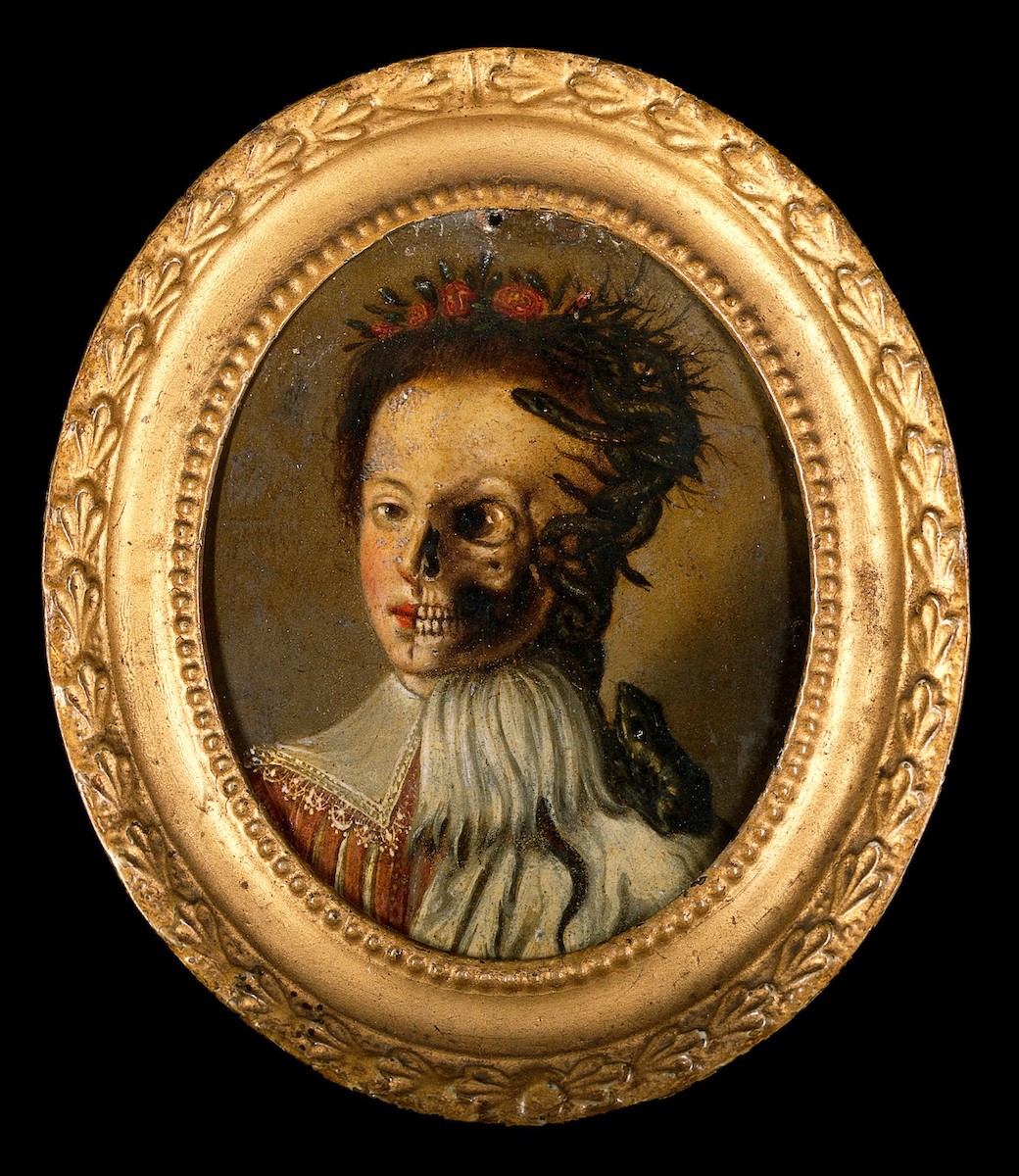 Life and death. Oil painting. Wellcome Collection
Life and death. Oil painting. Wellcome Collection
Death eats away at the face of this young man or woman, who is dressed in Italian 17th-century clothing. The juxtaposition of the sunken hollows and the bright cheeks, set against the exposed teeth and the red lips, creates an image that is at once unsettling and tragic. Little is known about the painting, but it draws upon the vanitas tradition. Popular in the 17th century, this type of still-life artwork typically contains collections of objects that symbolise transience and mortality.
Eine Kleine Nachtmusik, Dorothea Tanning
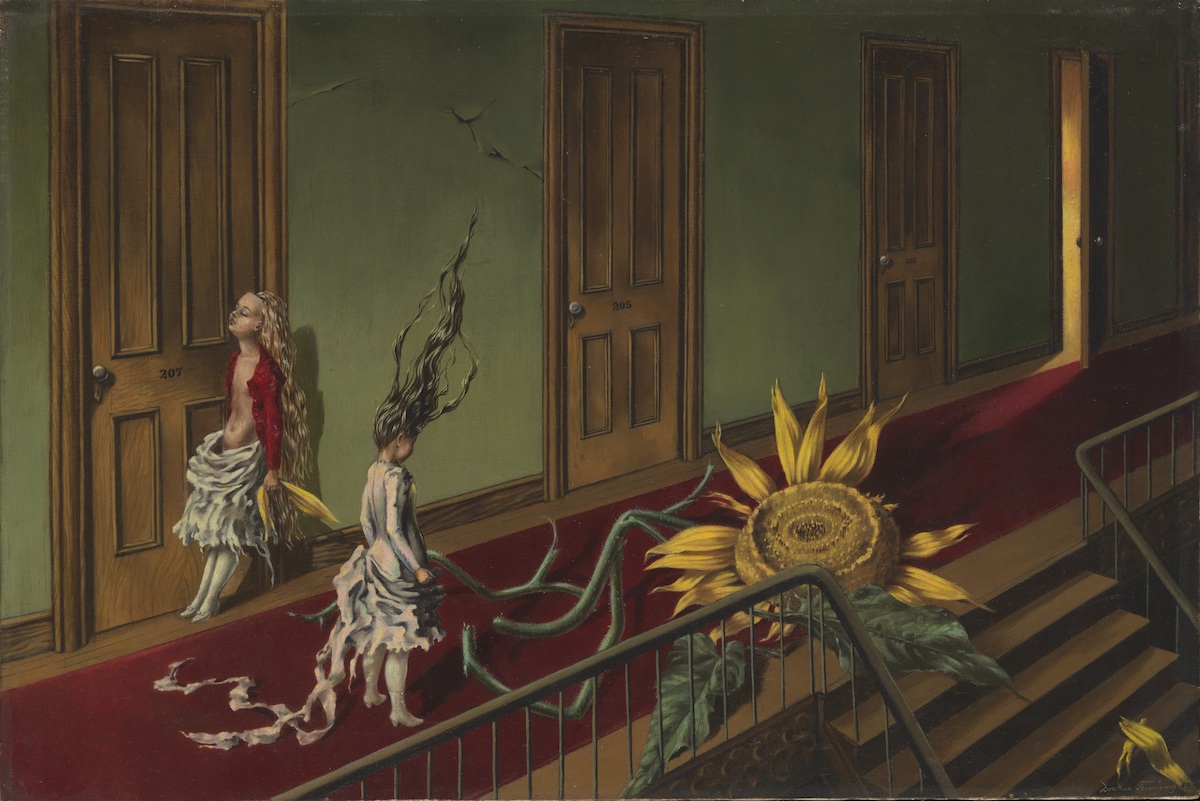 Eine Kleine Nachtmusik, 1943 © The Estate of Dorothea Tanning / ADAGP, Paris and DACS, London 2019
Eine Kleine Nachtmusik, 1943 © The Estate of Dorothea Tanning / ADAGP, Paris and DACS, London 2019
It may be named after Mozart’s joyful serenade, but this painting from 1943 has a distinctly unnerving atmosphere. A young girl stares at a broken sunflower, her hair flailing in the air, while a life-like doll leans against a hotel door. Commenting on the meaning of the work, Tanning stated: ‘It’s about confrontation. Everyone believes he/she is his/her drama. While they don’t always have giant sunflowers (most aggressive of flowers) to contend with, there are always stairways, hallways, even very private theatres where the suffocations and the finalities are being played out.’
Discover this work in The Enchanted Interior; Laing Art Gallery. Until 22 February 2020.
The Massacre of the Innocents, Rubens
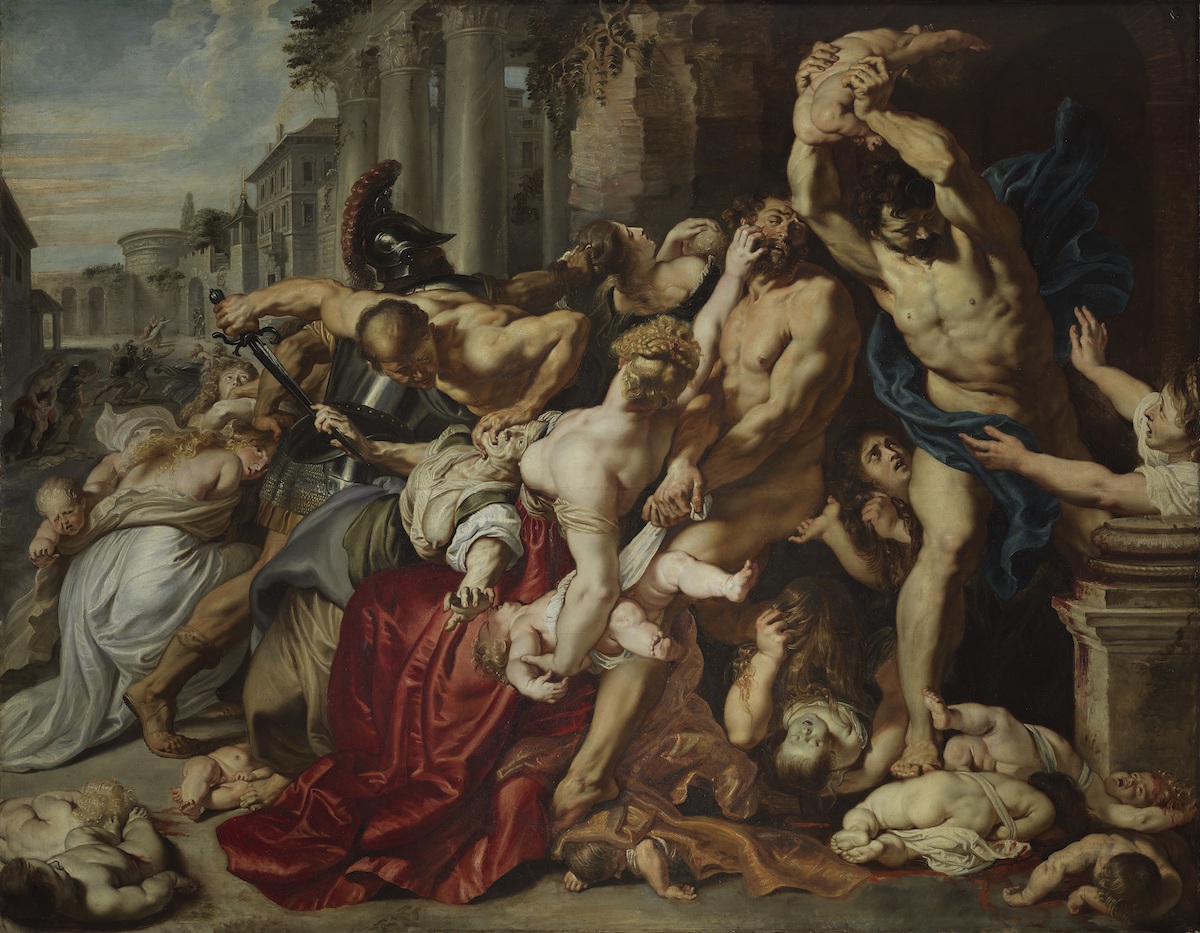 Peter Paul Rubens, The Massacre of the Innocents, c.1610. The Thomson Collection at the Art Gallery of Ontario. © Art Gallery of Ontario, 2014/1581
Peter Paul Rubens, The Massacre of the Innocents, c.1610. The Thomson Collection at the Art Gallery of Ontario. © Art Gallery of Ontario, 2014/1581
The bodies of dead children sprawl across the ground in this disturbing scene. It depicts the moment when Herod’s soldiers slaughter Bethlehem’s infants, to prevent the prophesised Messiah from usurping the ruler’s power. Here, Rubens contrasts the brutality of Herod’s men – one about to dash a baby to the ground – with the anguish of the mothers. In the centre of the painting, a lady in red makes a desperate attempt to save her child, clawing at the attacker’s face.
Look out for this work in Early Rubens; Art Gallery of Ontario. Until 5 January 2020.
Elizabeth Oliver is The Arts Society Magazine's editorial assistant
About the Author
Elizabeth Oliver
JOIN OUR MAILING LIST
Become an instant expert!
Find out more about the arts by becoming a Supporter of The Arts Society.
For just £20 a year you will receive invitations to exclusive member events and courses, special offers and concessions, our regular newsletter and our beautiful arts magazine, full of news, views, events and artist profiles.
FIND YOUR NEAREST SOCIETY
MORE FEATURES
Ever wanted to write a crime novel? As Britain’s annual crime writing festival opens, we uncover some top leads
It’s just 10 days until the Summer Olympic Games open in Paris. To mark the moment, Simon Inglis reveals how art and design play a key part in this, the world’s most spectacular multi-sport competition


